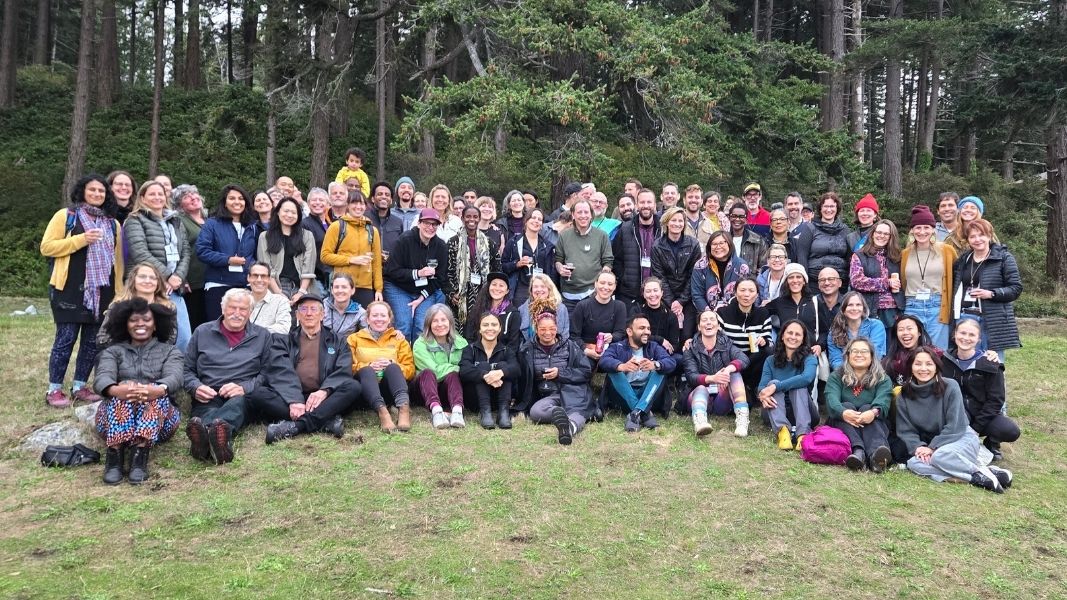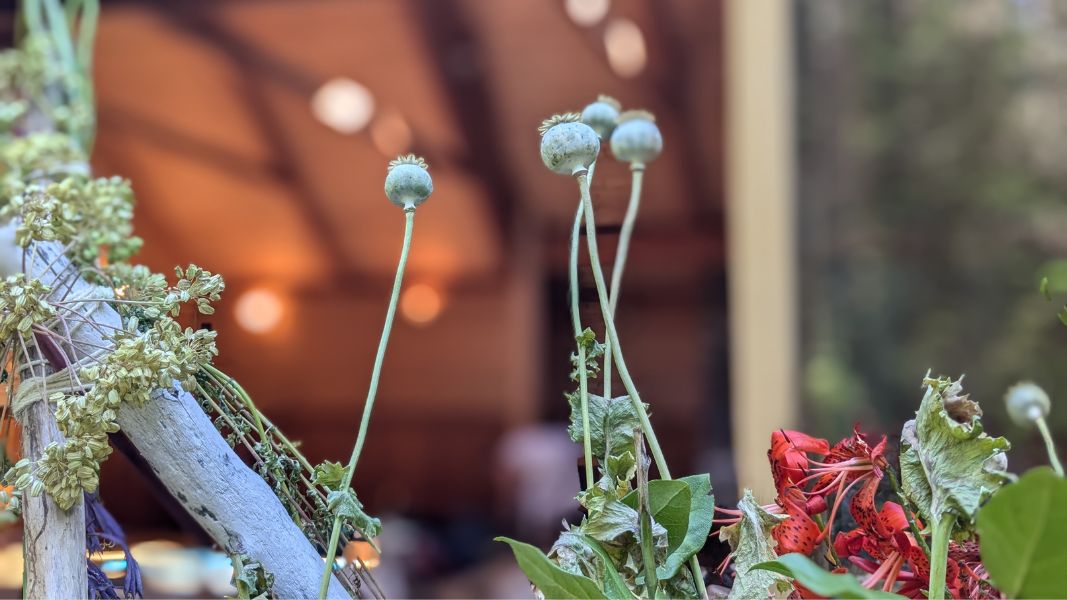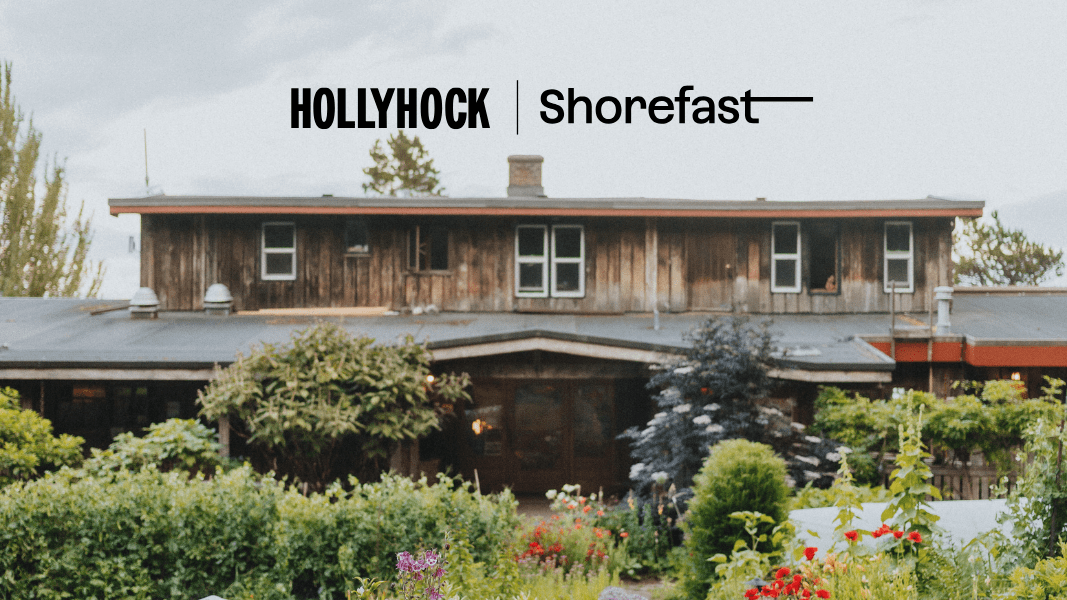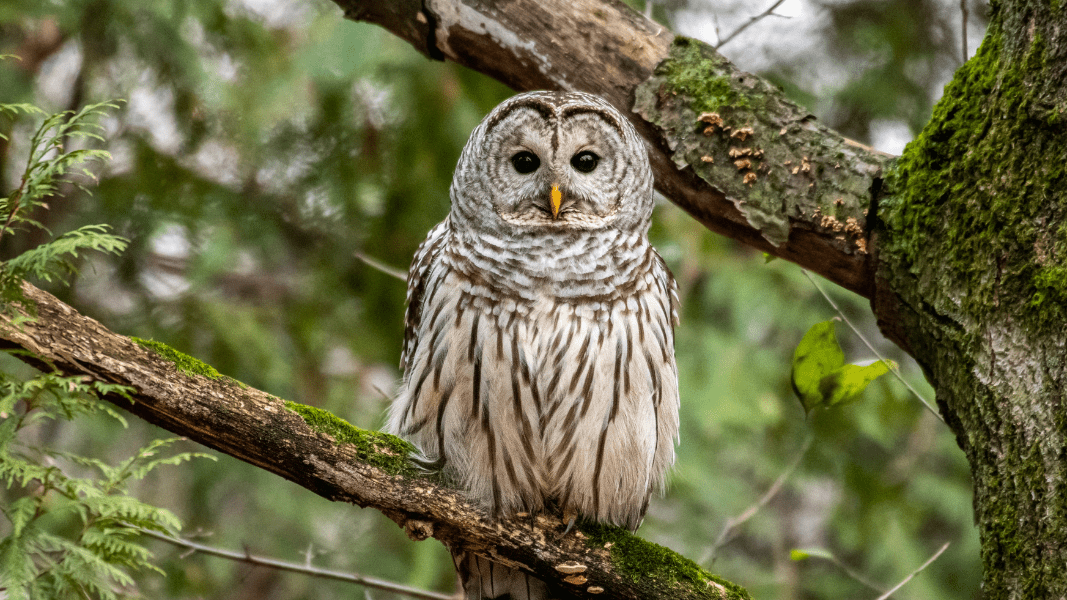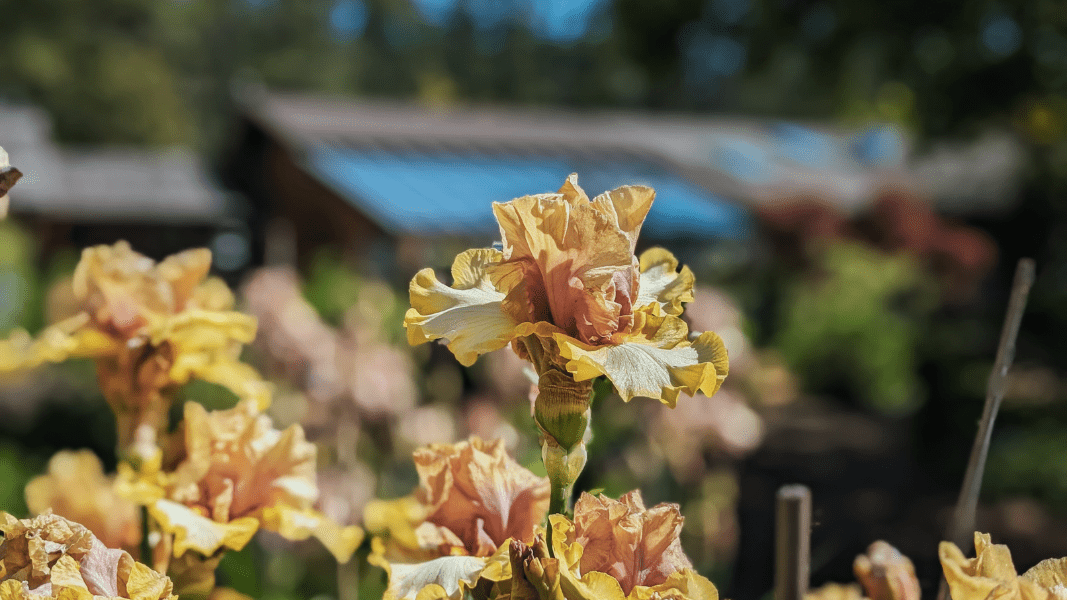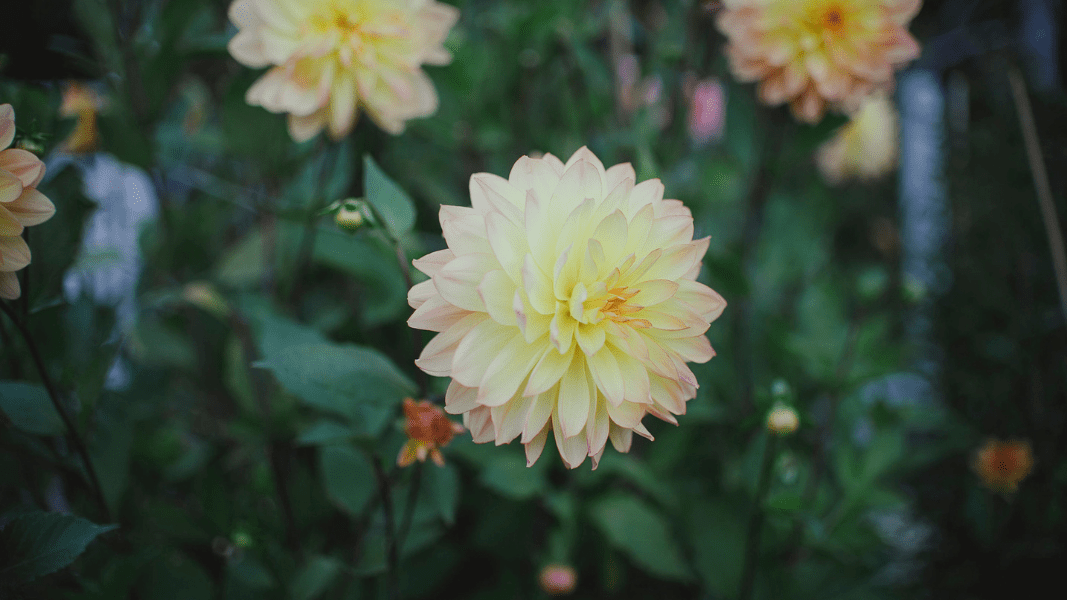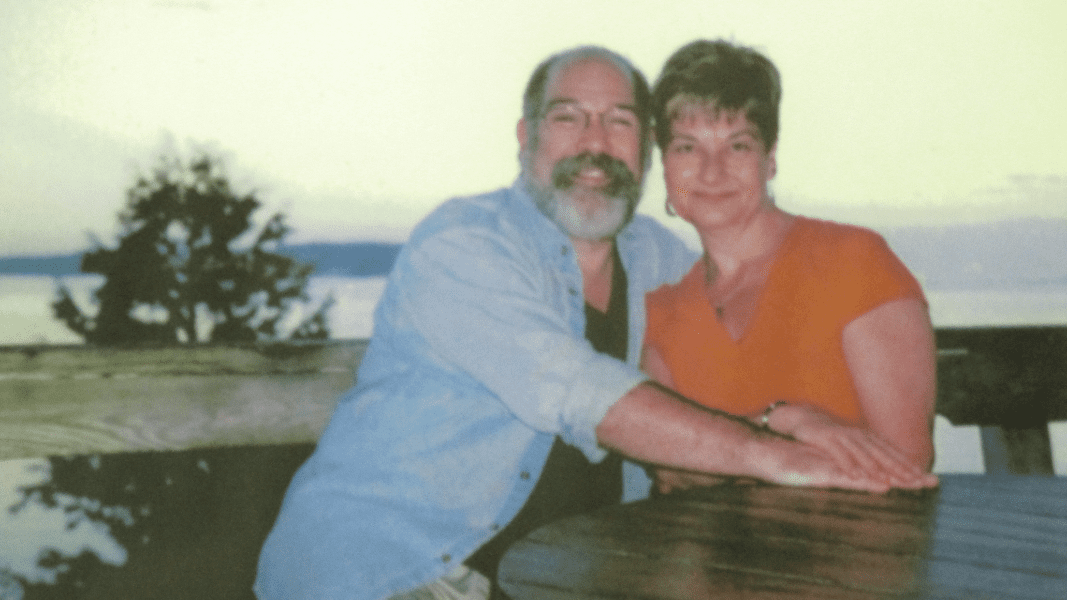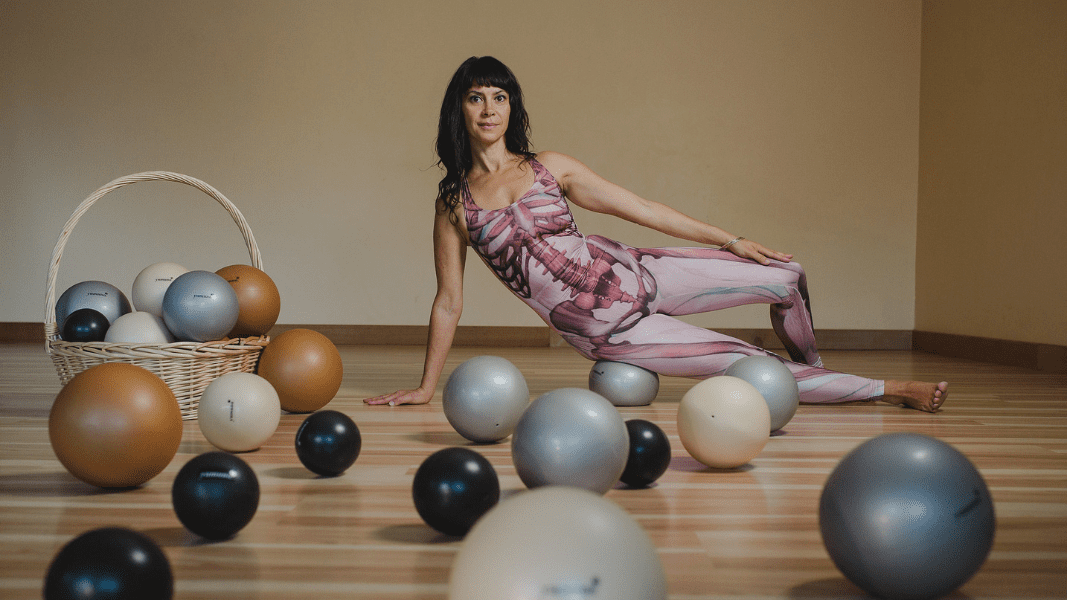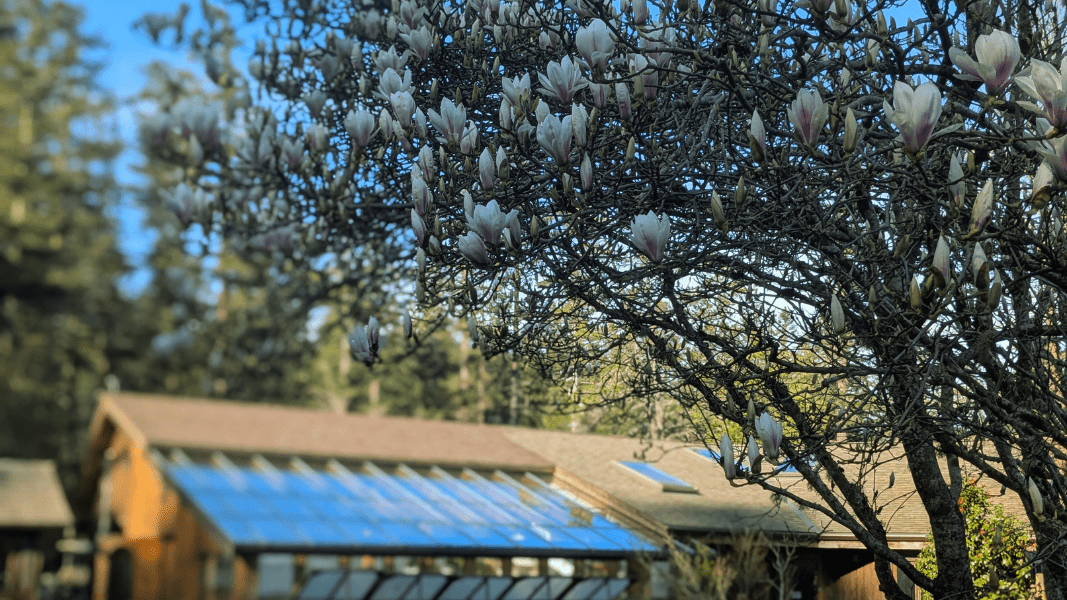It came from the cover of Hollyhock’s 2017 staff handbook. I’m the type of person who reads those, front-to-back, with a highlighter, taking notes. It’s a quirky quality that often comes in handy. But back in April 2017, it spurred an avalanche.
New to managing Hollyhock’s social media channels I was desperate to do a good job. To settle into the “brand voice,” I began pulling quotes directly from Hollyhock’s catalogue, strategic plan, website, and yes, our good ol’ staff handbook. Since these were “approved” by the not-for-profit, I didn’t think twice about what they actually said. Though even if I had, my 2017 self wouldn’t have caught any cause for alarm.
Do you?
71 accounts liked the post on Instagram. 23 gave us the infamous Facebook “thumbs-up.” But then two negative comments threw me a serious curveball.
So I did what any young, stubborn, fiery woman might do: I got defensive.
As our Communications team met to discuss the comments, I stayed quiet and bristley. I blamed the staff handbook, even as I wrote our apology in the post’s comment section. Thankfully, both accounts accepted our response with a quick “like.”
I filed the experience away under “resolved” and moved on to other tasks. For a month.
It was a few weeks later that Charlene Lo, now Senior Programs Director, recommended that our team tune into a webinar hosted by Rev. angel Kyodo williams. Charlene was planning to have Rev. angel bring Radical Dharma: A Conversation to our campus in 2018, and knew the deep value of her teachings.
The webinar was on blind spots.
If you’ve ever listened to Rev. angel Kyodo williams, you will know she is a powerful teacher. She shook my antiquated, privileged perspective right out of me. Hard. As I listened to her, I kept coming back to that Facebook post. I had uncovered a blind spot and now, as Rev. angel championed, regardless of where it came from, I had the responsibility to do something about it.
I owned my blindspot.
First, I apologized to my team. If you’ve ever had a blind spot revealed, chances are you didn’t handle it super graciously. I know I didn’t, sitting grumpily in the corner. I realized my team wasn’t actually blaming me for the post, but that we were all working on updating old ways of talking and thinking. The second thing I did was register for Indigenous Canada through the University of Alberta. It’s a free twelve-week course online and it offered a great start to unlearning the colonial history I was taught. My winter was spent pouring over course notes, Bev Sellars, and Katherena Vermette.
When I came out on the other side, the world looked very different.
I wanted to live with integrity, and that carried into my work at Hollyhock too. After consultation, I suggested significant changes to our land acknowledgement, including its location in our catalogue and website. With support from Hollyhock’s leadership, I created “Hollyhock: Stepping Towards Reconciliation” a guide packed-full of resources, concerns, and possible solutions. There was such excitement and support from the organization that when Klahoose First Nation offered a community event on Cortes Island to help people understand the dark underbelly of Canada, we practically had to draw straws.
I was one of the lucky three who attended from Hollyhock. The event was a KAIROS Blanket Exercise™, facilitated by Devin (Koosen) Pielle of Tla’amin First Nation and Zoë Ludski, with support from Tla’amin elder John Louie. The exercise took us through Canada’s colonialist history, from the perspective of Indigenous Peoples whose communities were systematically destroyed and undermined.
It moved me to tears. It sparked anger. It challenged my Canadian pride.
At the end of the exercise we all sat in a circle, under the beautiful cedar beams of the Klahoose First Nations Multi Purpose Building, and spoke our truth. I heard stories of residential schools, pain and sorrow. I heard stories of healing, community, and love. I heard each and every person’s journey to this moment and help hold that space. It was an honour and an experience that words fail to convey.
– Odette Auger, Sagamok Anishnabek, Hollyhock Campus Support Coordinator[/mk_blockquote]
As I drove home, I knew we had to bring this experience to Hollyhock.
Our Cortes team collaborated with facilitators Devin (Koosen) and Zoë, to plan a Blanket Exercise during our annual all-staff retreat. I was humbled to think that close to eighty people would have the opportunity to experience this powerful shift in understanding. I still am.
Experiencing my second KAIROS Blanket Exercise™ was different from the first. I cried a lot more.
As the blanket I stood on, representative of Indigenous land, got smaller and smaller, I watched a coworker attempt to hold their ground, only to be given a woollen blanket that was intentionally infected with smallpox. The First Nation she represented was wiped out and she was asked to sit down. I looked at the people around me and discovered that I feared for them. I knew everyone in the room, from Melanie Bagley who revealed her displacement as a woman of British and Métis descent, to Gary Gonzales of Squamish Nation, whose daughter, Amaya, was wrapped around his calf.
Which one of them would have to sit down next? What eradicated First Nation did they represent?
– Devin (Koosen) Pielle, Tla’amin, KAIROS Blanket Exercise™ Facilitator[/mk_blockquote]
The first time I experienced a KAIROS Blanket Exercise™ I was so frustrated at myself for not knowing the truth sooner, for not being better a better ally. I read the details in everything, as I mentioned earlier it’s one of my personality quirks. How did I miss such incredible injustice? It made me angry with myself. But now, I was absorbed with the realization that my entire community, full of diverse wisdom, experiences, values, and unique characters was being erased. One by one.
I was filled with a deep grief I couldn’t shake. And it was only a tiny taste of Indigenous Peoples reality.
– Devin (Koosen) Pielle, Tla’amin, KAIROS Blanket Exercise™ Facilitator[/mk_blockquote]
As the exercise came to a close, two elders of sister Nations, Yvonne Louie of Klahoose First Nation and Doreen Point of Tla’amin First Nation, offered us a traditional cedar brushing. When my turn came and the cedar bows settled on my head, I closed my eyes. Taking in a deep breath of it’s earthy scent, I thought of the immense resiliency of Indigenous Peoples. I thought of the warrior women before me, two elders, two facilitators, and Jacqueline Mathieu of Klahoose First Nation, training to become a facilitator; incredible, powerful, Indigenous women at the forefront of culture revitalization. Then, I thought of the woman who lived in blindness. I thanked her. I thanked her for opening her eyes to the truth, and I thanked her for being open to the many lessons yet to come.
There will be many more.
Devin (Koosen) Pielle, with assistance from Shelby George, Courtney Harrop, Emma Bell and Zoë Ludski recorded “We Are Still Here,” a documentary which reflects the stories of six Tla’amin survivors and two community members among many fighting for language revitalisation. It’s a program that engages community radio to help reconcile all Canadians with the history of Residential Schools, build respectful reporting on their legacy, and provide a lasting record of survivors experiences. http://cjmponline.ca/podcasting/index.php?id=1062
The Deep Roots Initiative, a partnership between Cortes Island Radio (CKTZ 89.5) and Klahoose First Nation, is a series of audio documentaries from Cortes Island. Season two, Island Waves, shares perspectives, history, and stories of Klahoose First Nation voices. https://cortesradio.ca/deep-roots-initiative/
Our Facilitators Devin (Koosen) Pielle and Zoë Ludski have been working together since 2013 using song, story, canoes, and media to create courageous conversations and bridge the gap between cultures in communities. Learn more about Taχəmaǰɛǰɛ (Creation, Facilitation, Consultation), visit https://taxumajehjeh.ca/
Yearning to experience, and host a Blanket Exercise? Visit https://www.kairosblanketexercise.org/
Ready to relearn Canada’s true history? Check out University of Alberta’s free online program Indigenous Canada. https://www.ualberta.ca/admissions-programs/online-courses/indigenous-canada or dive into this six week course through the University of British Columbia: http://pdce.educ.ubc.ca/reconciliation/
Have you seen Indian Horse? Based on Richard Wagamse’s award-winning novel, it’s a powerful drama that sheds light on Canada’s Residential Schools and the indomitable spirit of Indigenous Peoples. We brought it to Cortes Island, for a community-wide screening opened by Kathi Camilleri (Métis-Cree). http://www.indianhorse.ca/. (There has been much debate on the production of this film, which for many perpetuates the narrative of colonialism. I would invite you to read Why wasn’t an Indigenous director hired to make Indian Horse? by Radheyan Simonpillai.)
In partnership with Indian Horse, Animikii created the Next 150 Challenge. Start your journey of reconcili-action here: https://next150.indianhorse.ca/
Who defines Indigenous Identity? This is the question of Melanie Lefebvre and Alicia Elliott in article on language published in The Walrus: https://thewalrus.ca/we-didnt-choose-to-be-called-indigenous/
Are you a thorough contract reader too? Read the Comission of Canada’s Truth and Reconciliation final report: http://www.trc.ca/websites/trcinstitution/index.php?p=890 and the United Nations Declaration on the Rights of Indigenous Peoples (DRIP) https://www.un.org/esa/socdev/unpfii/documents/DRIPS_en.pdf
Writing such a vulnerable article isn’t easy, especially as a white settler whose bias is ever-present (and ever being deconstructed). Thank you to Odette Auger and Devin (Koosen) Pielle for your perspective, voices, guidance, fact-checking, and heart-felt support along the way.

